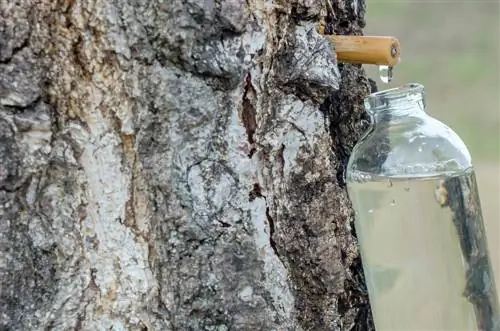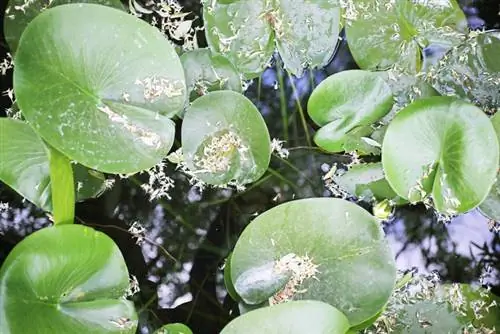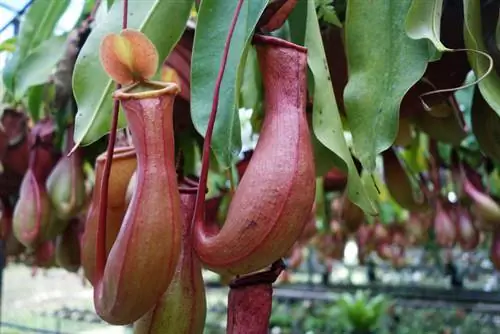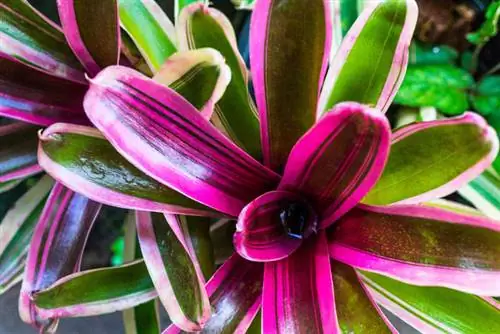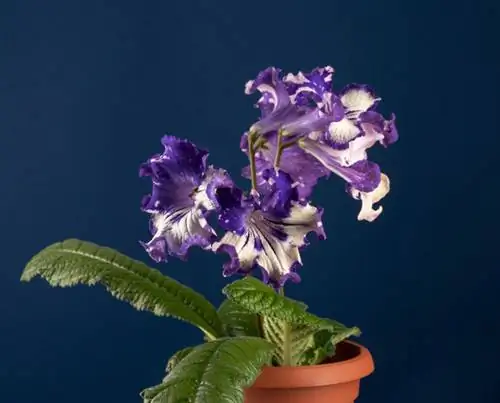- Author admin [email protected].
- Public 2023-12-16 16:46.
- Last modified 2025-01-23 11:22.
The ideal time for harvesting birch sap is between March and early May. The harvest period often extends over one to two weeks. As soon as the leaf buds swell, hardly any sap flows from the roots through the trunk.
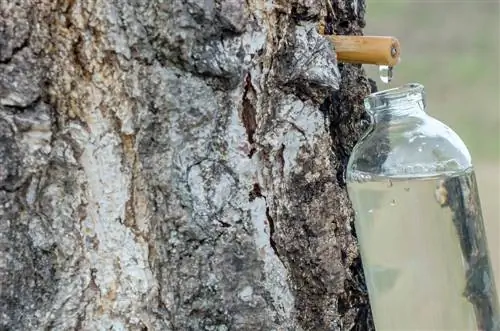
How to harvest birch sap?
Birch sap can be harvested from March to early May by drilling into the trunk, cutting off small branches or squeezing out juicy leaves. The branching method is the gentlest option and allows small amounts of birch sap to be collected without damaging the tree.
How to harvest birch sap:
- Drilling: Juice comes out through a hole in the trunk
- Cutting off: fresh breaks on branches release water
- Squeezing: succulent leaves release plant juice by grinding
Drilling
Slicing cuts from below at a low trunk height creates a small bark injury, which runs through the bark and cambium into the sapwood. The birch water comes out of this wound and is channeled into a collecting container using a straw (€6.00 on Amazon) or a piece of wood. Since this variant is not without danger, you should resort to more gentle measures.
Dangers
With this so-called trunking method, you run the risk of causing damage to the tree. If the tree loses an excessive amount of fluid, it no longer has enough energy for the development of the leaves and flowers. He althy and sturdy trees usually tolerate the method without any problems, as long as it is not carried out on the same trunk every year in a row.
Further dangers arise from the penetration of fungi or insects into the wound. The escaping juice flushes out potential pathogens and pests. If the wounds are closed with corks or resin, this cleaning cannot take place, resulting in wood rot.
Tee off
The branching method is the safest way to harvest small amounts of birch sap. Branch breaks occur in nature due to wild animals and natural events and usually do not cause much damage. Cut a branch 0.5 centimeters in diameter so that you can stick the tip into a bottle. Tie the vessel tightly and wait for the flow of sap to subside. The birch sap lasts for a few days in the refrigerator.
Squeezing
This variant occupies a special position because it is not used to obtain the actual birch water. The juice differs in color and taste. If you collect the succulent leaves, then press them and filter out plant parts, you will get a greenish to yellowish liquid. The birch sap tastes bitter due to the tannins it contains.

